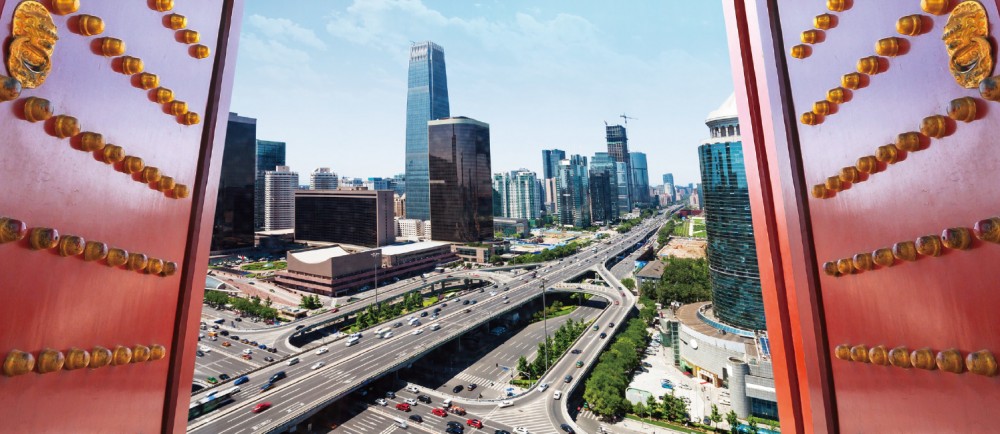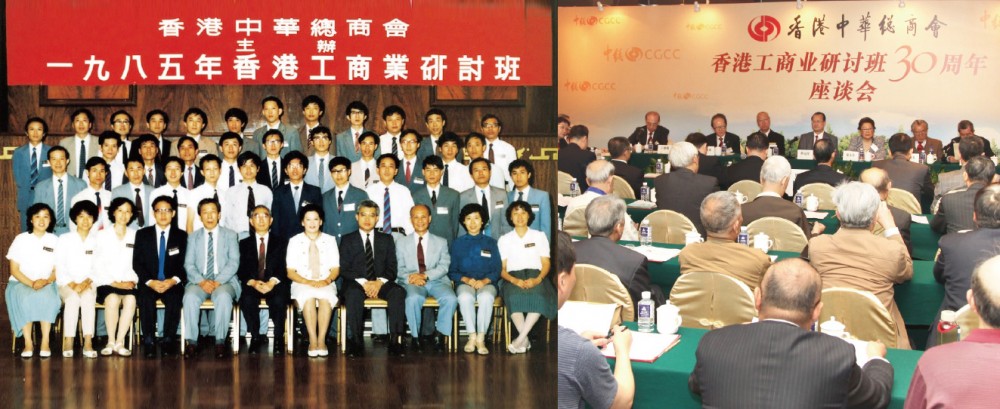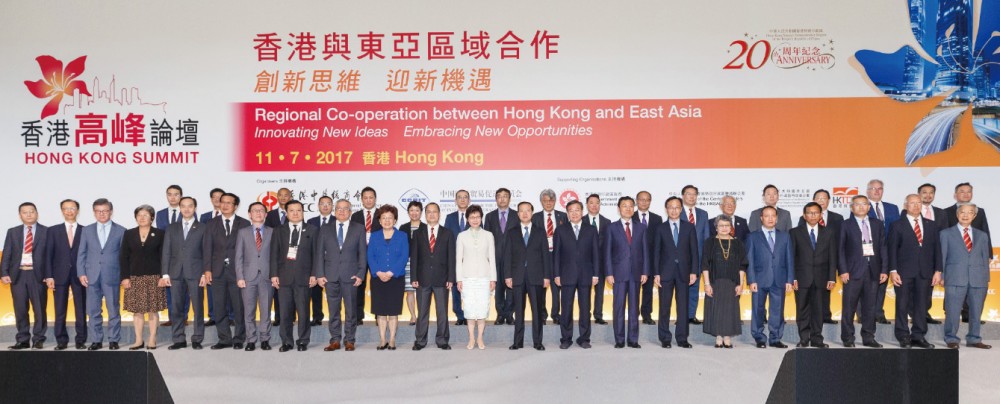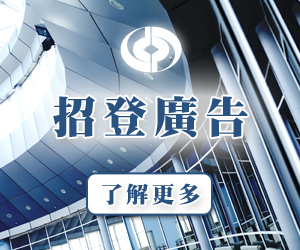 While participating and investing in our country’s reform and opening up, CGCC’s members also act as a bridge and tirelessly promote economic and trade ties between Hong Kong and the Mainland, as well as support the country in the context of “bringing in, going out”.
While participating and investing in our country’s reform and opening up, CGCC’s members also act as a bridge and tirelessly promote economic and trade ties between Hong Kong and the Mainland, as well as support the country in the context of “bringing in, going out”.
Our country has indeed undergone momentous changes after four decades of reform and opening up: its transformation from a poor and backward agricultural country to the world’s second largest economy is really a hard-won accomplishment. Reflecting on the past in the light of the present, CGCC’s members have not been absent from this marvellous chapter of our country’s development.
Pioneer of business delegations to the Mainland

CGCC was an early organizer of business delegations to the Mainland in the initial days of the PRC’s founding. The “Hong Kong-Macau Business Community Northeast China Tour Group” organized in 1950 was regarded as the first such delegation after the founding of the republic.
On the Shenzhen Municipal Government’s invitation, CGCC started to make business visits to the Mainland as early as before the Central Government decided to experiment the Shenzhen Special Economic Zone. As the Mainland’s reform and opening up gather pace, such visits have been increasing in frequency and widening in scope, covering the Pearl River Delta and Yangtze River Delta regions nearby, and Gansu, Qinghai, Ningxia, Heilongjiang and Inner Mongolia further away.
Upsurge in investment in the Mainland

Meanwhile, CGCC triggered an upsurge in investment in the Mainland when, at the beginning of reform and opening up, it set up an investment and trade advisory group and the China Four Modernizations Service Committee to drive the Hong Kong business community towards investing and setting up factories in the Mainland. CGCC’s members also scored a number of “firsts”:
- 1978: The mechanized chicken farm set up by Vice-Chairman Tang Kwan and Member Liu Hao-tsing in Guangzhou was the first project donated by Hong Kong.
- 1980: Beijing Air Catering Co Ltd in which Committee Member James Wu invested, was the first joint venture between the Mainland and Hong Kong and the first to be granted approval by the Foreign Investment Regulation Commission of the People’s Republic of China.
- 1982: Advancetex Fashion Garment Manufactory, a subsidiary of Chairman Charles Yeung’s Glorious Sun Enterprises, set up a factory in Guangdong, which was the first enterprise engaged in processing and assembly of supplied materials and parts or compensation trade.
- 1983: The construction of White Swan Hotel in Guangzhou, in which Chairman Henry Fok invested, was the first joint-venture five-star hotel between the Mainland and Hong Kong.
- 1985: Chairman Tsang Hin-chi invested USD1 million to set up Silverlion Co Ltd in his hometown, Meixian County as a joint venture, which brought in advanced tie manufacturing technology and equipment.
- As early as in the initial stage of reform and opening up, Chairman Jonathan Choi’s Sunwah Group had already invested in Guangdong’s aquaculture industry, including farming, fishing and seafood processing.
Uninterrupted support for Canton Fair
Since 1957, Guangzhou has been hosting the “China Import and Export Fair” (Canton Fair) every spring and autumn. Taking the lead in giving support through action, CGCC mobilized and organized its members to participate in the fair and has been doing so uninterrupted for more than 50 years since the inception of the fair. It also sent out invitations on behalf of the organizer until 2000. Nearly 40,000 invitations made by CGCC were accepted. Therefore, CGCC’s role as a vanguard in the country’s efforts to open up the global market is obvious to all.
Not to be outdone in talent cultivation
Our country was in urgent need for economic and trade talents with a global vision in the early 1980s when reform and opening up was in full swing. With this in mind, CGCC started the “Hong Kong Industry and Commerce Training Program” in 1982. Focusing on running the programme well, it ensures that the curriculum always keeps pace with the times. It has so far trained over 7,000 economic and trade talents for the country. After completing the programme, many of them were promoted and hold leadership positions at the state and provincial levels, such as Huang Mengfu, former Vice Chairman of the CPPCC National Committee; Li Qiang, Secretary of CPC Shanghai Municipal Committee and Liu Kun, Minister of Finance.

Remarkable achievements in promoting commerce and trade
 In the 1990s, China wrangled with the US Government over its MFN status every year. CGCC and Hong Kong’s industrial and commercial groups formed a delegation to lobby support in Washington and invited US politicians to visit Hong Kong and the Pearl River Delta cities. The process lasted nearly a decade, during which CGCC worked assiduously to ensure that the MFN status was successfully renewed so that Sino-US trade relations could continue to develop.
In the 1990s, China wrangled with the US Government over its MFN status every year. CGCC and Hong Kong’s industrial and commercial groups formed a delegation to lobby support in Washington and invited US politicians to visit Hong Kong and the Pearl River Delta cities. The process lasted nearly a decade, during which CGCC worked assiduously to ensure that the MFN status was successfully renewed so that Sino-US trade relations could continue to develop.
Since the official signing of the CEPA in 2003, CGCC has played an active role as a facilitator at various stages, assisting the Hong Kong business community to fully understand and capture opportunities through various channels including seminars, study visits and websites. In 2013, CGCC staged the “CEPA in a Decade: Guangdong-HK Win-win Cooperation” forum and concurrently held a picture display to enhance public understanding on CEPA.

The Mainland’s economy has continued to grow in recent years. In line with the country’s strategy of attracting foreign investment and going global, CGCC has actively participated in setting up and organizing the World Chinese Entrepreneurs Convention (WCEC). CGCC hosted the 2nd WCEC in Hong Kong in 1993 and then in 2001, it helped bring the 6th WCEC to Nanjing, the first time the Convention was held in the motherland, paving the way for Mainland enterprises to go global.
Look on the past to herald a new landscape ahead

Regional cooperation is the current trend of the times. To this end, CGCC staged the “Hong Kong Summit” in 2010, 2012 and 2017. In recent years, it also held regional economic cooperation forums in Kuala Lumpur, Singapore, Ho Chi Minh City, Jakarta and Paris. On 23 August this year, it will host the first “CGCC World Chinese Entrepreneurs Summit” in Hong Kong, with the focus on consolidating Hong Kong’s role as a hub for the Mainland and surrounding regions. Besides the industrial and commercial level, CGCC held the “CGCC Belt & Road FEST” last year to enhance public understanding on those countries involved in the “Belt and Road Initiative”. All these activities have played a positive role in promoting the “Belt and Road Initiative” and the planning and development of the Bay Area.

On the occasion of the 40th anniversary of our country’s reform and opening up, in retrospect, CGCC’s participation is filled with endless stories to share. Looking back on the past and forward to the future, CGCC has always adhered to its mission of “taking roots in Hong Kong, gaining support from the Motherland, reaching out to the world”, continuing its efforts to maintain Hong Kong’s prosperity and stability and advance our country’s economic development.




